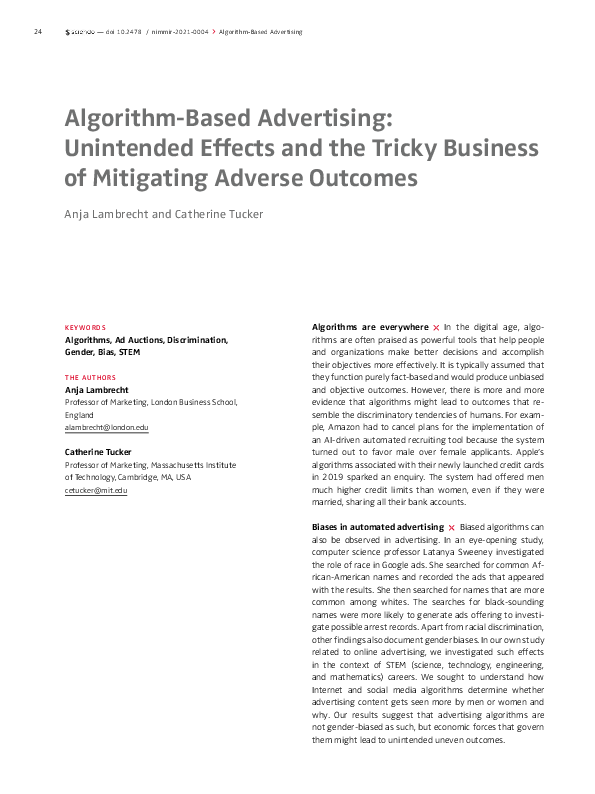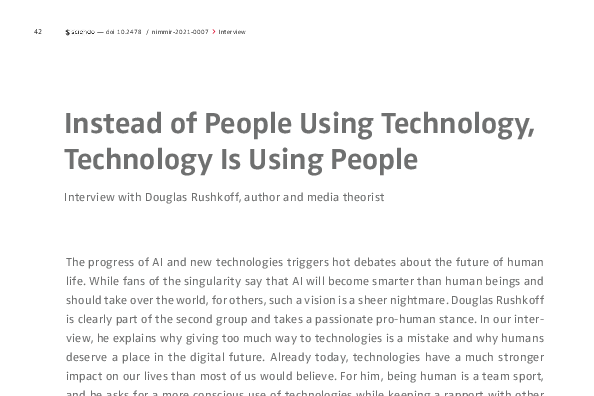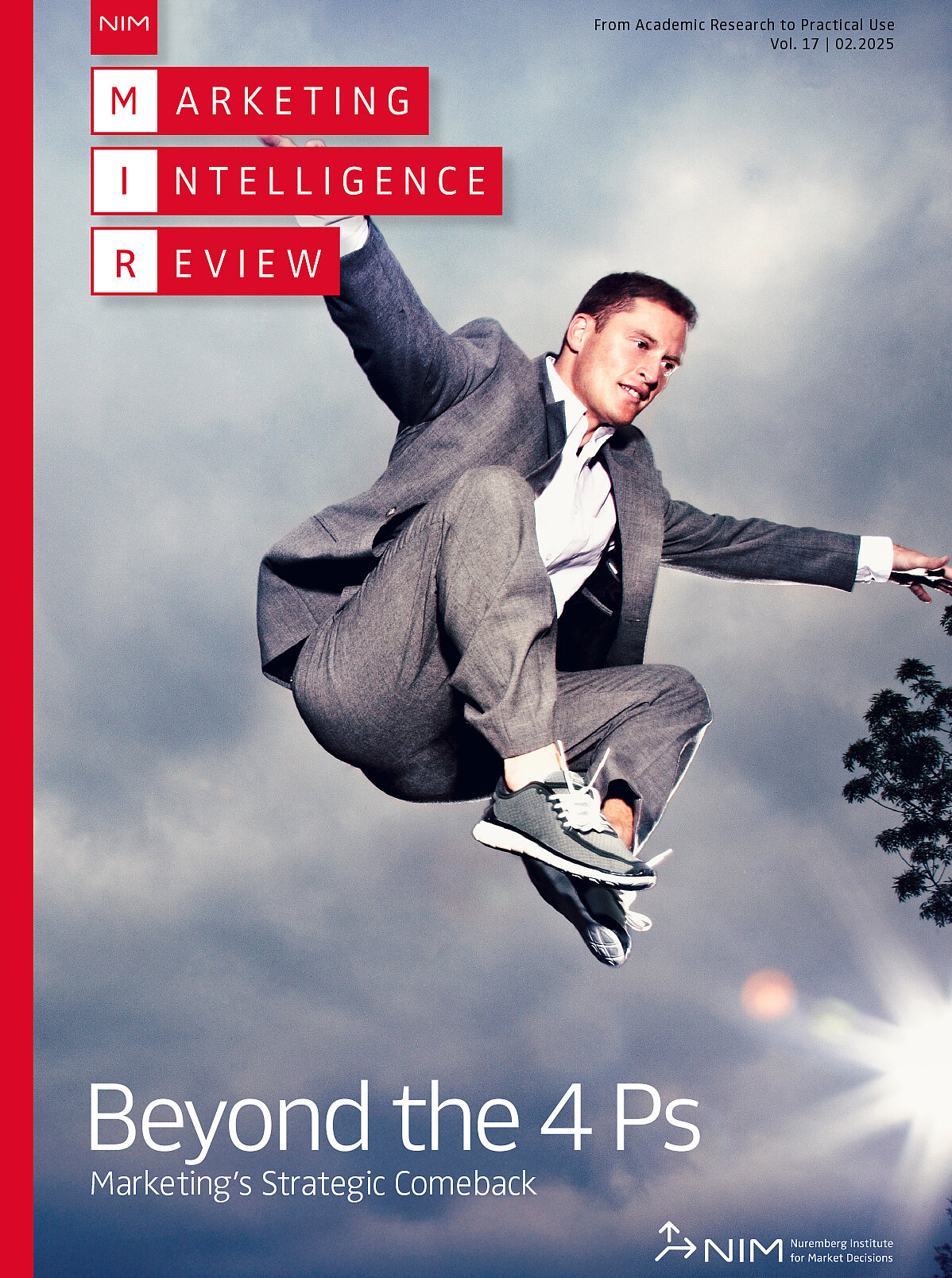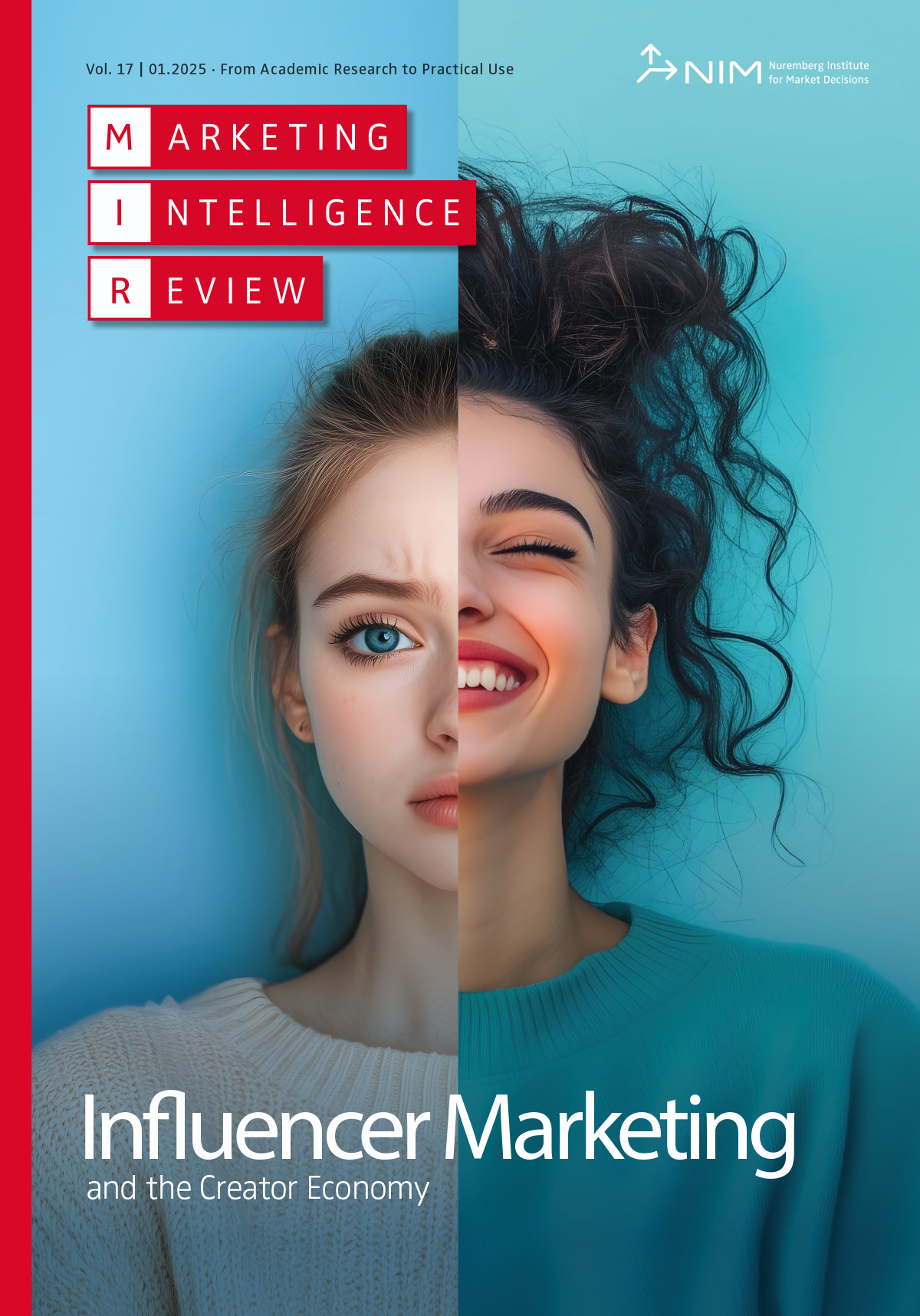 Download
Download
Algorithm-Based Advertising: Unintended Effects and the Tricky Business of Mitigating Adverse Outcomes
Anja Lambrecht and Catherine Tucker
Some algorithms may have similar discriminatory tendencies to humans. The presented study investigates gender bias in social media advertising in the context of STEM careers. Results suggest that advertising algorithms are not gender-biased as such, but that economic forces in the background might lead to unintended, uneven outcomes. Spillover effects across industries make reaching some consumer segments more likely than others. A gender-neutral strategy is less likely to reach women because women are more likely to react to advertising. Therefore, targeting them is more expensive and economic forces unintentionally favor men. One potential solution could be running separate campaigns for men and women to target both demographic groups equally. However, anti-discrimination legislation in many countries does not allow companies to target employment ads to only one gender. So ironically, laws that are designed to avoid discrimination actually rule out a fairly simple way to correct the bias in online targeting on Facebook and other platforms, illustrating further need for policy guidance in this area.
![[Translate to English:] [Translate to English:]](/fileadmin/_processed_/9/0/csm_2021_1Licht_ins_Dunkel_4f1312736f.png)
![[Translate to English:] [Translate to English:]](/fileadmin/_processed_/e/e/csm_wertenbroch_vol_13_no_1_de_0_b4b4446d15.png)
![[Translate to English:] [Translate to English:]](/fileadmin/_processed_/3/7/csm_kuebler_pauwels_vol_13_no_1_de_0_683618de8a.png)
![[Translate to English:] [Translate to English:]](/fileadmin/_processed_/c/5/csm_thomaz_vol_13_no_1_de_a076447ee0.png)

![[Translate to English:] [Translate to English:]](/fileadmin/_processed_/1/4/csm_Die_Illusion_der_Wahlfreiheit_f80894d2d0.png)
![[Translate to English:] [Translate to English:]](/fileadmin/_processed_/c/e/csm_Jung__aber_nicht_naiv_55c440f5cd.png)


